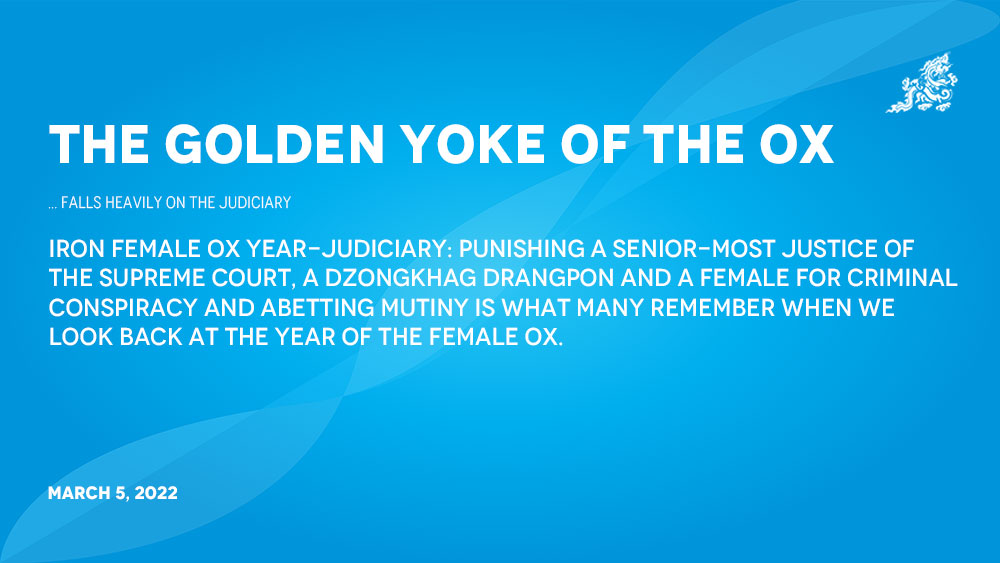… falls heavily on the judiciary
Tashi Dema
Iron Female Ox Year-Judiciary: Punishing a senior-most justice of the Supreme Court, a dzongkhag Drangpon and a female for criminal conspiracy and abetting mutiny is what many remember when we look back at the year of the Female Ox.
The year started with the detention of the country’s senior-most justice of the Supreme Court (SC), Kuenlay Tshering, Drangpon Yeshey Dorji and a woman, Khandu Wangmo.
They were later convicted for the crime with the detention of the justice raising questions of trial proceedings for constitutional post holders without being impeached.
Kuenley Tshering’s detention without being impeached violated Article 32 of the Constitution, which states that a holder of constitutional offices should first be removed by way of impeachment after which he or she becomes an ordinary citizen and can be tried for the alleged offences.
Since there is no impeachment Act in the country, the National Judicial Commission was supposed to initiate the impeachment, but it did not happen.
The prosecuting agency, the Office of the Attorney General (OAG), justified that the impeachment is for offences that are administrative in nature and committed while executing judicial functions and not for criminal offences.
People also questioned differing sentencing for the same offence or inconsistent court rulings.
The High Court reduced the sentencing for a 56-year-old teacher in Tsirang to 10 years and six months from the Tsirang court’s sentence of 30 years for molesting 10 students aged eight to 10.
The HC altered Thimphu dzongkhag court’s judgment in the sedition case involving defendant Khandu Wangmo and increased her prison term to 21 years from a concurrent sentencing of five years.
The year also saw litigants and relatives resorting to social media accusing the judiciary of miscarriage of justice besides,sharing in public, their grievances and frustration about the judicial process.
While the judiciary remained silent on the allegations, many said it opened a floodgate by conducting hearings after the social media pleas when it was their responsibility to listen to parties.
Leveraging IT
Meanwhile, the pandemic has also given the opportunity for the judiciary to explore and adopt technology to adjudicate cases.
It launched the electronic litigation (eLitigation) platform to expedite judicial process, save time and cost. People also use social media apps to attend court hearings. Farmers, who are comfortable using Wechat, used it for case hearings.
The judiciary also saw some major reforms like dissolving the larger bench of the High Court, which is seen as a bottleneck in delivering swift justice as many litigants prolonged the resolution of their cases by appealing to the larger bench and then to the Supreme Court.
The removal of the larger bench has shortened the appeal process.


